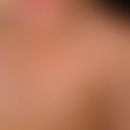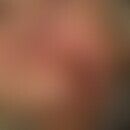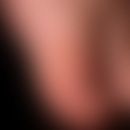DefinitionThis section has been translated automatically.
Pigment Green 7, also called phthalocyanine green, is a green, odorless, practically insoluble in water powder with the molecular formula CuC32Cl16-nHnN8.
General informationThis section has been translated automatically.
Phthalocyanine green is a polychlorocopper phthalocyanine. It is a synthetic dark green pigment and belongs to the phthalocyanines according to its chemical structure. The green pigment is non-toxic and extremely resistant to solvents, acids and alkalis. The complex organic compound is derived from phthalic acid. It is listed in the Colour Index under C.I. Pigment Green 7.
You might also be interested in
OccurrenceThis section has been translated automatically.
In industrial applications in coatings, plastics and high-quality printing inks, phthalocyanine green is the standard green pigment used due to its excellent fastness level (Herbst, W et al. (2004).
For use in paints and printing inks, phthalocyanine green is commercially available under various names (true green, helioecht green, pigment green 7, vert héliogène, monastral green). Since the pigment is non-toxic and strong in color, it is used for soaps, as in toilet soap, syndet soap and liquid soap. It is used as an additive in shampoos, shower baths, dishwashing detergents, laundry detergents and fabric softeners. In contact lenses, it is used as a light-controlling additive. As a school paint, the pigment is known as dark green.
Furthermore, it was used as tattoo ink until Jan. 4, 2023. The European Union planned to ban the pigments "Pigmentblue 15:3" and "Pigmentgreen 7" for tattoo colors as early as 2020 because of health risks, as their documentation does not meet the requirements of the EU chemicals regulation REACH (Regulation (EU) 2020/2081). In the meantime, the ban applies.
Note(s)This section has been translated automatically.
If the 3-position on all four benzene rings is brominated instead of chlorinated, the result is the 2Y type of phthalocyanine green. If all chlorine atoms are replaced, it is the 8Y type. All yellow-green brominated pigments are summarized in the Colour Index as C.I. Pigment Green 36. The hue of these pigments is clearly more yellowish, and the hue becomes significantly more yellow as the number of bromine atoms in the molecule increases.
LiteratureThis section has been translated automatically.
- BG RCI (2012) Toxicological evaluation of copper phthalocyanine, chlorinated (PDF) at Berufsgenossenschaft Rohstoffe und chemische Industrie (BG RCI), retrieved 7.5.2023.
- Erk P et al (2003) Phthalocyanine dyes and pigments in Porphyrin Handbook 19: 105-149.
- EU Commission (2021) Possible end to tattoo dyes blue 15 and green 7. Retrieved May 13, 2021.
- Herbst, W et al (2004) Industrial organic pigments. 3rd edition, Wiley-VCH, Weinheim 2004.
- Polychlorocopper phthalocyanine(2019) Entry for polychlorocopper phthalocyanine in GESTIS substance database of IFA, retrieved 19 December 2019.
- Commission Regulation (EU) 2020/2081 of 14 December 2020 amending Annex XVII to Regulation (EC) No 1907/2006 of the European Parliament and of the Council on the Registration, Evaluation, Authorization and Restriction of Chemicals (REACH) as regards substances in tattooing ink or permanent make-up.




